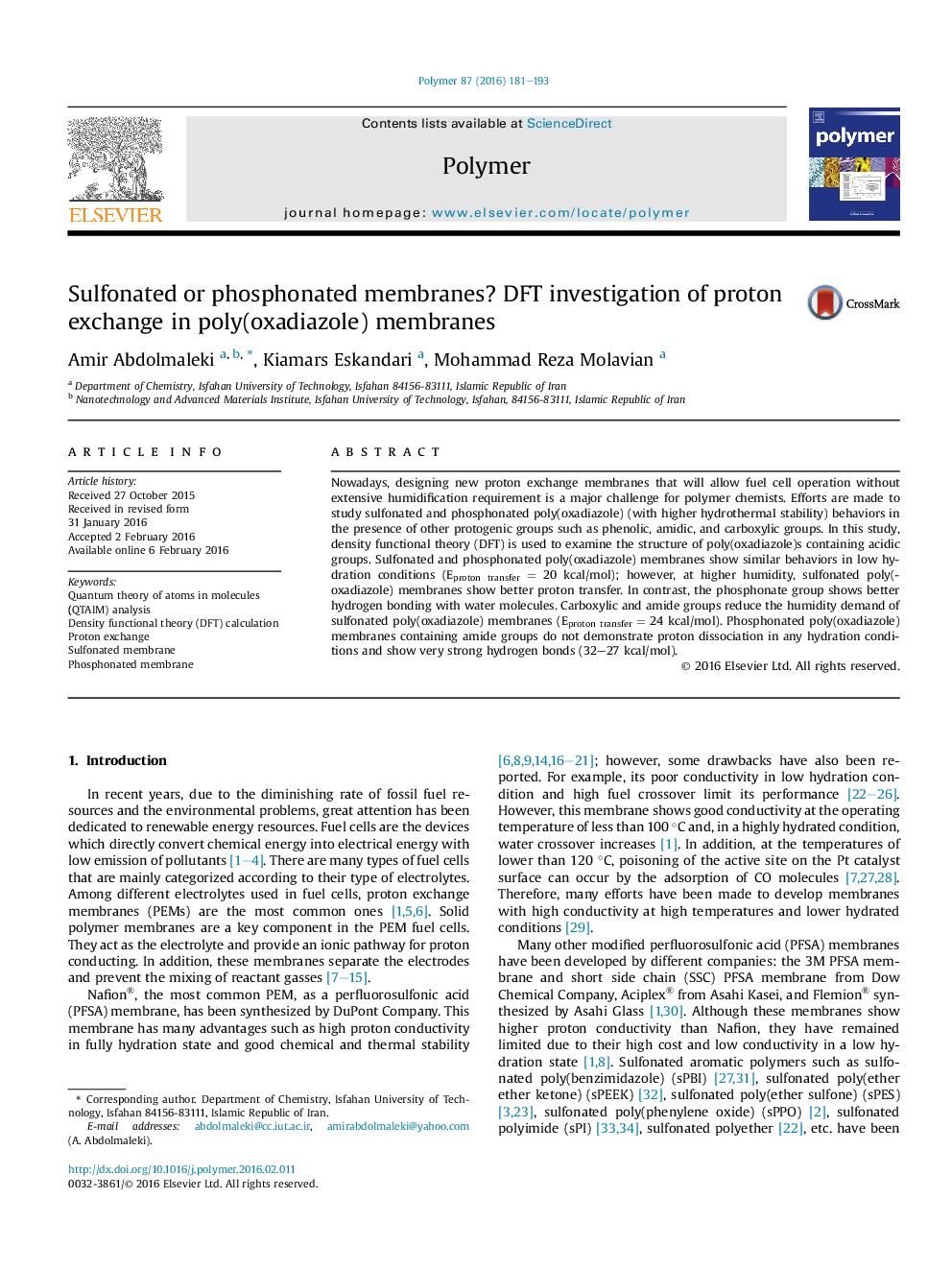| Article ID | Journal | Published Year | Pages | File Type |
|---|---|---|---|---|
| 5179495 | Polymer | 2016 | 13 Pages |
â¢Sulfonate and phosphonate groups have same proton transfer energy at low humidity.â¢Sulfonate group show better proton transfer than phosphonate group at high humidity.â¢With the second protogenic group, sulfonated membranes show better proton transfer.â¢The second protogenic group reduces proton transfer of phosphonated membranes.
Nowadays, designing new proton exchange membranes that will allow fuel cell operation without extensive humidification requirement is a major challenge for polymer chemists. Efforts are made to study sulfonated and phosphonated poly(oxadiazole) (with higher hydrothermal stability) behaviors in the presence of other protogenic groups such as phenolic, amidic, and carboxylic groups. In this study, density functional theory (DFT) is used to examine the structure of poly(oxadiazole)s containing acidic groups. Sulfonated and phosphonated poly(oxadiazole) membranes show similar behaviors in low hydration conditions (Eproton transfer = 20 kcal/mol); however, at higher humidity, sulfonated poly(oxadiazole) membranes show better proton transfer. In contrast, the phosphonate group shows better hydrogen bonding with water molecules. Carboxylic and amide groups reduce the humidity demand of sulfonated poly(oxadiazole) membranes (Eproton transfer = 24 kcal/mol). Phosphonated poly(oxadiazole) membranes containing amide groups do not demonstrate proton dissociation in any hydration conditions and show very strong hydrogen bonds (32-27 kcal/mol).
Graphical abstractDownload high-res image (202KB)Download full-size image
